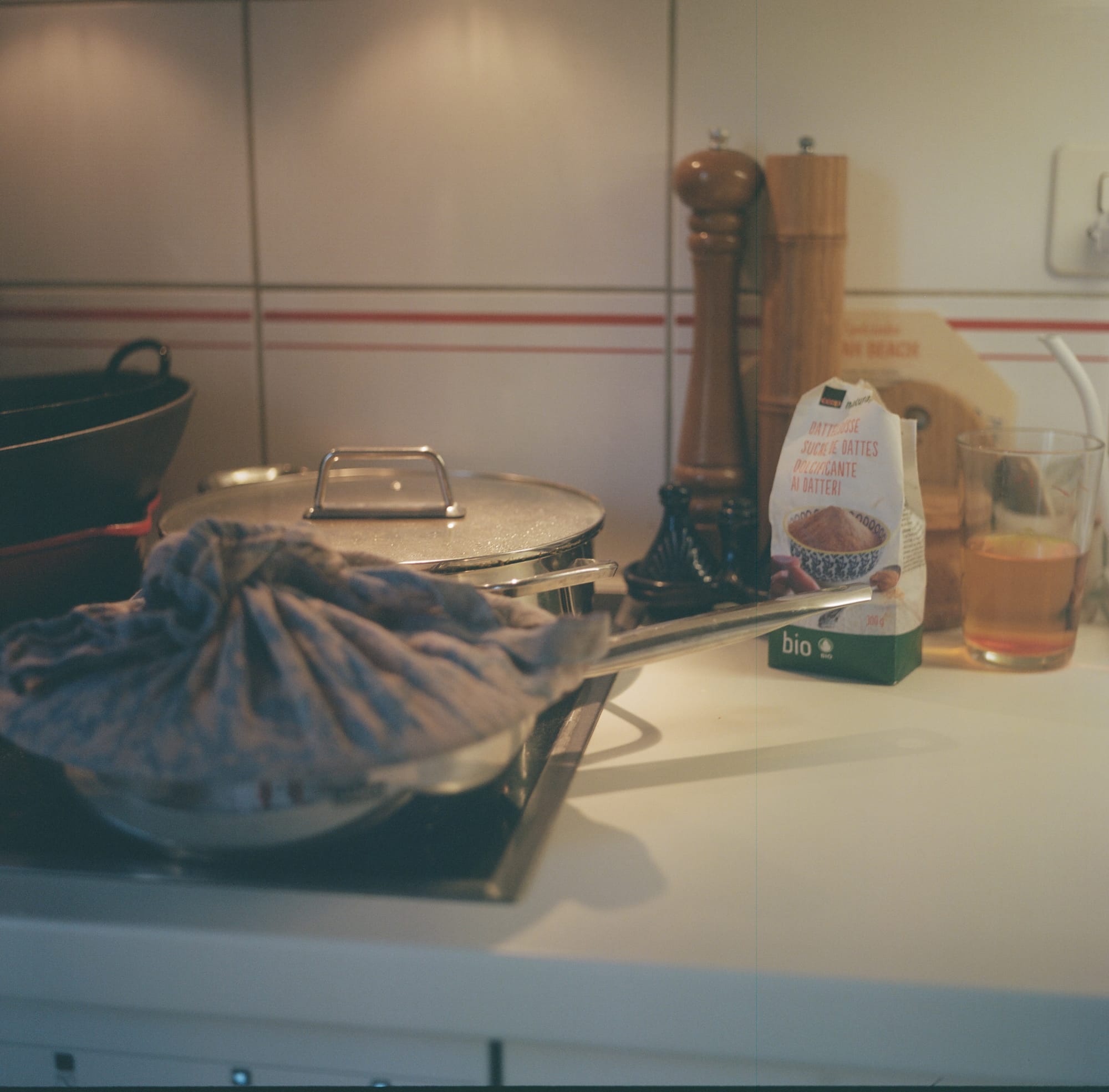What to eat IRAN 🇮🇷 Fesenjan
Prior to the twentieth century, ...fesenjan was known as “the food of royals,” and “the queen of Persian dishes.” ...To say someone “just had partridge and fesenjan” is to imply pretentiousness or pomposity in Persian.

Fesenjan
Published October 25, 2024 · by Amanda Rivkin Häsler
Fesenjan, or fesenjoon in Tehrani dialect, is a delightfully delicate dish comprised of three primary ingredients: a protein, usually poultry like chicken or even duck, walnuts and pomegranate molasses that is then topped with pomegranate seeds. A dash of saffron water and a few other spices such as turmeric give it a fuller flavor palette and make it pop.
The dish itself traces back to the golden age of the second Persian empire, also known as the Sassanid dynasty, between 224 and 651, prior to the Muslim conquests. The geographic origins of fesenjan are in the north of Iran, in Gilan and Mazandaran provinces, in the central northern part of Iran, geographically defined as the lower Caspian basin.
The earliest known references to fesenjan in Persian texts however date only to the nineteenth century, though we know the essential ingredients comprising fesenjan appeared in Iran centuries ago because University of Chicago archeologists working in Persepolis, the capital of the first Persian empire, the Achaemenid Empire which had its run from 550 to 330 B.C., discovered clay tablets listing pomegranates, walnuts and poultry as pantry staples.

The first dictionary to mention fesenjan is the Farhang-e Anandraj, which calls the dish fasujan and states the dish originates in Gilan province. Another early reference is found in Mirza Ali-Akbar Ashbazpashi’s Sofra-ye at’ema which lists ten different varieties including walnuts, suggesting a far longer history of cooking and experimenting with the dish.
In the northern Iranian provinces of Gilan and Mazandaran where fesenjan originates, people often like fesenjan as dark as possible. Efforts to make the walnuts extra toasty such as by adding an iron horseshoe or even an iron heated over an open fire before being added to the braise are not necessarily advisable at home. The pomegranate molasses and the tannins of the ground walnuts interact when a chunk of iron is added to darken the color of the dish, producing something that is almost black.
Prior to the twentieth century, when the key ingredients in fesenjan remained scarce and were far more of a luxury, fesenjan was known as “the food of royals,” and “the queen of Persian dishes.” The dish remains reserved for special occasions and its association with certain royal courts, like the Qajar dynasty in more recent times, as well as luxurious ingredients, mean fesenjan is still very much considered a rich man’s dish. To say someone “just had partridge and fesenjan” is to imply pretentiousness or pomposity in Persian.

The holiday it is most associated with is the winter solstice, known as Yalda night in Iran. Other occasions that warrant serving fesenjan include Novruz, or the Persian New Year, as well as weddings and family occasions. It is also popular as an iftar meal breaking the Ramadan fast and in autumn, fesenjan is popular as it is peak pomegranate season.
Christians in Iran have been known to serve the dish as a Christmas meal and for the country’s minority Jewish population, fesenjan is most associated with Rosh Hashannah, or the Jewish New Year, and Passover. The dish is included in many popular Jewish cookbooks, including The Book of Jewish Food by Claudia Roden, in addition to Jewish Community Cookbooks, including the Persian Hebrew Congregation in Skokie, Illinois outside Chicago. Diaspora and exiles have also brought these traditions with them to new lands.
Typically, fesenjan is served over a Persian saffron rice known as tahdig, notable for its deliberately crunchy parts formed by adding yogurt and saffron to a portion of parboiled rice at the bottom before topping that first layer with more parboiled rice and being left to steam.
Recipe
Ingredients:
2 white onions
600 grams of walnuts
Saffron
1 kilo boneless skinless chicken breasts
Maldon or kosher salt to taste
1 tablespoon turmeric
650 grams pomegranate sauce
1 tablespoon date sugar
Step 1: Dice two white onions finely and place in a pan to caramelize in olive oil.
Step 2: In a food processor, combine 600 grams of walnuts until finely ground. Set aside.
Step 3: Take roughly a tablespoon of saffron and grind either by pinching in your palm or with a mortar and pestle add two cups of warm water. Set aside.
Step 4: Cut the chicken into smaller pieces, roughly each chicken breast into thirds.
Step 5: Once the onions have browned a bit, add the chicken and turmeric and turn up the heat slightly so chicken can brown a bit on the outside, turning the chicken once so that each side is cooked.
Step 6: Add the crushed walnuts and half a liter of water so the chicken is covered. Stir until the combination is paste-like. Add one half cup of the saffron water and cover, return to low heat and let stew for 30 minutes, stirring periodically.
Step 7: Lift the lid on the chicken stewing in walnuts, stir and add pomegranate sauce and date sugar. Cover and allow to stew another 30-40 minutes, until chicken is fork tender.
Step 8: Serve the fesenjan on top of basmati or Persian rice with a side salad and yogurt.
Tips, tricks and notes:
Use the saffron water sparingly. Add more as needed, not all at once to prevent anything from becoming too watery.
Having had this dish many times before in America, especially at the first restaurant where I ever ate Persian food, the legendary Pars Cove on the north side of Chicago, I can say perhaps it was the pomegranate sauce that was not quite on par or the absence of a Persian mother-in-law, but this dish was missing something and I cannot quite say what.
While tasty, I would welcome feedback and critiques from Persian readers on ways to improve it because it is easily one of the most delicious things when done perfectly and properly. Perhaps even the brand of pomegranate sauce was the issue.
Ask and you shall receive, and so we did from Iranian followers on Instagram who offered up the following tips:



Learn where to eat Iranian food in Switzerland.
Follow our social media pages @swissglobaldining on Instagram, TikTok and YouTube